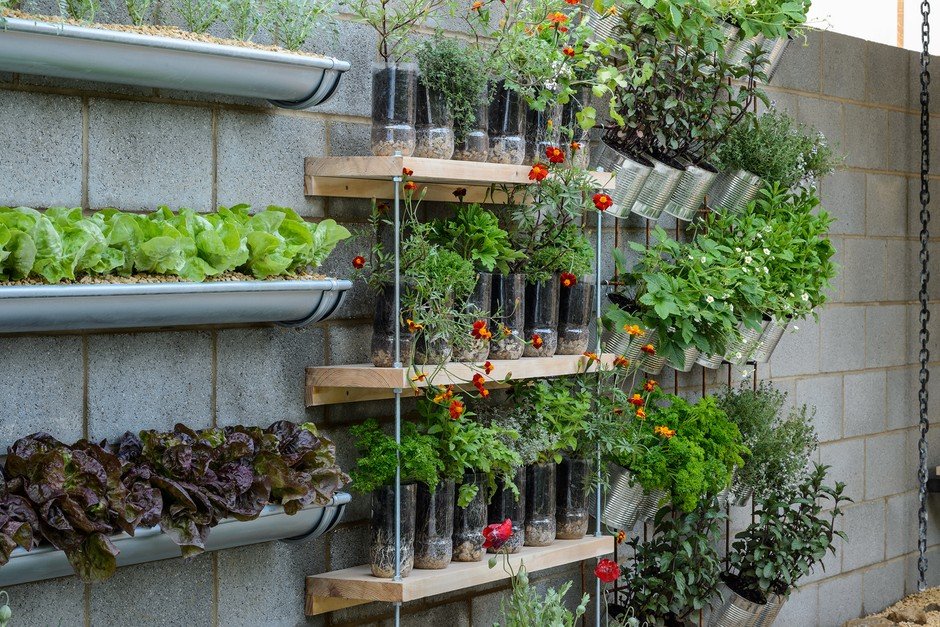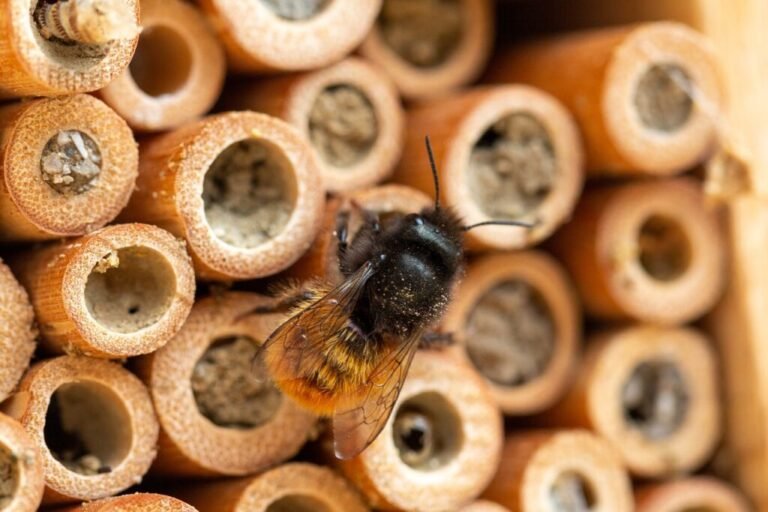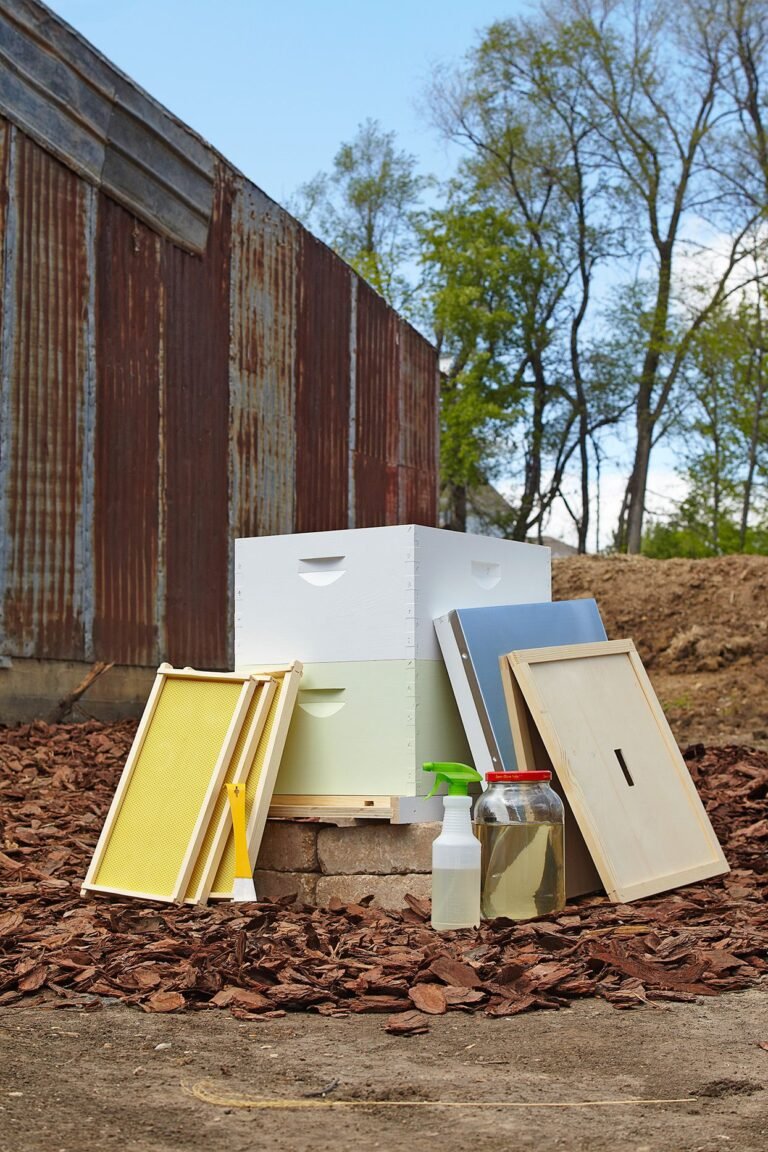Bee hotels are a fantastic way to support local pollinators. They are easy to make and budget-friendly.
In this blog, we’ll explore seven affordable bee hotel projects perfect for beginners. Bee hotels provide a safe haven for solitary bees, helping them thrive. These projects are not only beneficial for the environment, but they are also simple and cost-effective.
Whether you have a garden or a small balcony, you can create a cozy space for these important pollinators. Building a bee hotel is a rewarding activity that connects you with nature and promotes biodiversity. Plus, it’s a fun project that you can do alone or with family and friends. Ready to get started? Let’s dive into these seven beginner-friendly bee hotel projects!
Introduction To Bee Hotels
Bee hotels are simple structures that provide bees with a safe place to nest. They are a wonderful way to support local bee populations. These hotels mimic natural habitats, like hollow stems and dead wood. Building a bee hotel is a fun and rewarding project for beginners.
Importance Of Bee Hotels
Bee hotels play a crucial role in supporting solitary bees. These bees are different from honeybees and do not live in hives. They need safe places to lay their eggs and raise their young. By creating a bee hotel, you help provide these vital spaces.
With declining bee populations, every bee hotel counts. These structures offer a sanctuary for bees that are losing natural habitats. Your small effort can make a big difference in the environment. It helps increase pollination and supports biodiversity.
Benefits For Beginners
Starting with a bee hotel project is ideal for beginners. It is easy to build and does not require special skills. Most materials are affordable and readily available. You can even use recycled items from around your home.
Building a bee hotel offers a great learning experience. It teaches about bee behavior and the importance of pollinators. This hands-on project can be enjoyed alone or with family and friends. It is a fun way to connect with nature and make a positive impact.
Here are some benefits of starting a bee hotel project:
- Low cost: Most materials are inexpensive or free.
- Easy to build: Simple designs are available for beginners.
- Educational: Learn about bees and their role in the ecosystem.
- Environmental impact: Support local bee populations.
- Engaging: A fun project for individuals or groups.
Ready to start your own bee hotel project? Check out our list of 7 affordable bee hotel ideas for beginners.
Choosing The Right Location
Selecting the perfect spot for your bee hotel is crucial. A well-placed bee hotel can attract more bees and ensure their safety. Let’s explore the best places to position your bee hotel and some common mistakes to avoid.
Best Spots For Bee Hotels
Placing your bee hotel in the right spot can make all the difference. Here are some ideal locations:
- Sunny Areas: Bees love the sun. Place the hotel where it gets direct sunlight for most of the day.
- Flower Proximity: Position the hotel near flowers. Bees need easy access to nectar.
- Wind Protection: Choose a spot sheltered from strong winds. This keeps the hotel stable and safe.
- Height: Mount the bee hotel at least three feet off the ground. This protects it from ground predators.
Avoiding Common Mistakes
Avoiding common errors ensures the success of your bee hotel. Here are some pitfalls to watch out for:
- Overcrowded Areas: Avoid placing the bee hotel in busy spots. Bees need peace and quiet.
- Shaded Locations: Do not place the hotel in constant shade. Bees need warmth to thrive.
- Moist Environments: Avoid damp areas. Moisture can lead to mold, harming the bees.
- Unstable Surfaces: Ensure the bee hotel is on a stable surface. Wobbly placements can disturb the bees.
By choosing the right location, your bee hotel will attract more bees and provide them with a safe habitat.
Materials And Tools
Creating a bee hotel can be a fun and rewarding project. Choosing the right materials and tools is essential. Don’t worry, you don’t need expensive supplies or advanced skills. Here, we’ll guide you through affordable materials and essential tools needed for your bee hotel project.
Affordable Materials
Gather materials that won’t break the bank. Start with wooden blocks or scrap wood. Bamboo sticks or hollow plant stems work great. Use paper straws as an alternative. Recycle tin cans or plastic bottles. Use untreated wood to avoid harming the bees. Choose natural materials like leaves and pine cones for nesting.
Essential Tools
A few basic tools are required. A hand saw or electric saw is useful for cutting wood. A drill with various bits helps create holes. Sandpaper smooths rough edges. Have a ruler or measuring tape for precision. A hammer and nails are needed for assembling. Use non-toxic glue for added strength.
Simple Tin Can Bee Hotel
Creating a bee hotel is a fun and rewarding project for beginners. The Simple Tin Can Bee Hotel is an excellent choice. It uses materials you likely have at home. This project helps you support local bee populations. It is affordable, easy, and educational.
Materials Needed
- Empty tin can (clean and label-free)
- Bamboo sticks or paper straws
- Scissors
- Hot glue gun
- Twine or string
- Drill (for drainage holes)
Step-by-step Guide
- Prepare the tin can: Clean the can thoroughly. Remove any labels.
- Drill drainage holes: Use a drill to make small holes in the bottom. This prevents water from collecting inside.
- Cut the bamboo sticks: Cut the bamboo or paper straws. Ensure they are slightly shorter than the length of the can.
- Fill the can: Fill the can with the bamboo sticks or paper straws. Pack them tightly to prevent movement.
- Secure the contents: Use a hot glue gun to secure the sticks in place. This step ensures stability.
- Attach twine: Tie a piece of twine around the can. This will be used to hang the bee hotel.
- Choose a location: Hang the bee hotel in a sunny spot. Ensure it is protected from the wind and rain.
Your Simple Tin Can Bee Hotel is now ready. You have created a cozy home for solitary bees. These tiny creatures will help pollinate your garden. Enjoy watching them thrive in their new habitat.
Wooden Block Bee Hotel
A Wooden Block Bee Hotel is a simple and effective project for beginners. It provides a cozy home for solitary bees. These bees are vital for pollination. Building a bee hotel helps them thrive in your garden.
Materials Needed
- Wooden block (untreated)
- Drill with various bit sizes (3-10 mm)
- Sandpaper
- Protective gloves
- Eye protection
- Wood finish (optional)
Construction Tips
Start with an untreated wooden block. Choose one that is thick and sturdy. The block should be at least 10 cm deep.
Use a drill to create holes in the block. Holes should vary in size from 3 mm to 10 mm. This attracts different bee species.
Ensure holes are 5-10 cm deep. Do not drill all the way through. Space the holes apart to avoid splitting the wood.
After drilling, sand the edges of the holes. This prevents bees from getting hurt.
If desired, finish the block with a non-toxic wood finish. This can help the hotel last longer.
Place the bee hotel in a sunny, sheltered spot. It should be at least 1 meter above the ground. Ensure the entrance faces south or southeast.
Regularly check the bee hotel. Clean out any debris to keep it inviting for bees.
Upcycled Plastic Bottle Hotel
Creating a bee hotel from an upcycled plastic bottle is a fun and eco-friendly project. This project is perfect for beginners and helps attract solitary bees to your garden. Solitary bees are excellent pollinators and need safe places to nest.
Materials Needed
- 1 clean plastic bottle
- Scissors or a craft knife
- Bamboo canes or paper straws
- String or wire
- Glue (optional)
Assembly Instructions
Start by cutting the top off the plastic bottle. This creates an open end for the bee hotel. Be careful to cut it evenly.
Next, measure and cut the bamboo canes or paper straws. They should be slightly shorter than the bottle. Ensure the ends are smooth to avoid harming the bees.
Fill the bottle with the bamboo canes or paper straws. Pack them tightly to prevent them from moving. You can use glue to secure them, but it’s not necessary.
Once filled, attach the string or wire around the bottle. Make a loop to hang the bee hotel from a tree branch or fence.
Place the bee hotel in a sunny spot, sheltered from strong winds. Bees love warmth and dry conditions.
Monitor your bee hotel regularly. Make sure it stays dry and clean.
Clay Pot Bee Hotel
The Clay Pot Bee Hotel is an affordable and easy-to-build project. Perfect for beginners, it provides a cozy home for solitary bees. These bees are important pollinators, and helping them thrive is a great way to contribute to the environment. Plus, it’s a fun project that adds charm to your garden.
Materials Needed
- Clay pot (medium-sized)
- Bamboo tubes or hollow stems
- Clay or mud
- Wire mesh
- Twine or rope
- Small stones or pebbles
Setup Process
- Prepare the Pot: Ensure the clay pot is clean. Fill the bottom with small stones for drainage.
- Arrange the Tubes: Cut bamboo tubes or hollow stems to fit inside the pot. Each tube should be around 6-8 inches long.
- Secure the Tubes: Pack the tubes tightly inside the pot. Use clay or mud to secure them in place.
- Cover with Wire Mesh: Place a piece of wire mesh over the open end of the pot. This prevents predators from disturbing the bees.
- Hang the Hotel: Use twine or rope to hang the pot horizontally in a sunny, sheltered spot in your garden.
By following these simple steps, you can create a welcoming space for solitary bees. This Clay Pot Bee Hotel is not only functional but also adds a rustic touch to your garden decor.
Creating A Bamboo Bee Hotel
Attracting bees to your garden is both beneficial and enjoyable. One of the best ways to do this is by creating a bamboo bee hotel. This simple project can provide a safe home for solitary bees, aiding in pollination. Let’s dive into the details.
Materials Needed
Gathering the right materials is the first step. Here is what you’ll need:
- Bamboo canes (varying diameters)
- Hand saw or pruning shears
- Sandpaper
- Drill with bits
- Twine or wire
- Wood glue
- Frame or box (optional)
Building Method
Follow these steps to build your bamboo bee hotel:
- Cut the bamboo canes into lengths of 6-8 inches using a hand saw or pruning shears.
- Sand the edges of each bamboo piece to remove any splinters.
- Drill holes into the bamboo pieces if needed. Ensure the holes are smooth and clean.
- Bundle the bamboo canes together, using twine or wire to secure them. Apply wood glue for extra stability.
- Place the bundle inside a frame or box for added protection (optional).
- Hang or place your bamboo bee hotel in a sunny, sheltered spot in your garden.
Creating a bamboo bee hotel is an easy and rewarding project. It provides a cozy home for bees, helping your garden thrive.
Maintaining Your Bee Hotel
Keeping your bee hotel in good condition is essential for the well-being of your bees. Bees are low-maintenance, but regular care ensures their habitat remains safe and comfortable. This section will guide you through the steps needed to maintain your bee hotel effectively.
Regular Inspections
Performing regular inspections of your bee hotel helps identify any issues early. Check for signs of wear and tear, such as broken tubes or damaged wood. Remove any debris or spider webs that might accumulate over time. Doing this ensures that bees have a clean and safe environment.
Look for any signs of unwanted pests. Wasps or ants can sometimes invade bee hotels. If you find any, gently remove them and take steps to prevent future invasions. Regular inspections keep your bee hotel in top shape and help your bees thrive.
Seasonal Care Tips
Each season brings different challenges and needs for your bee hotel. In spring, clean out old nesting materials and replace damaged parts. This prepares the hotel for new arrivals.
During summer, ensure the bee hotel has some shade. Direct sunlight can overheat the habitat. Use a small awning or place the hotel in a partly shaded area.
In autumn, remove any unused nesting tubes. This reduces the risk of mold and parasites over winter. Also, consider moving the bee hotel to a sheltered location to protect it from harsh weather.
Winter care involves minimal disturbance. Bees are dormant, so avoid moving the hotel. Check occasionally for any signs of moisture buildup and ensure the structure remains intact.
| Season | Action |
|---|---|
| Spring | Clean out old materials, replace damaged parts |
| Summer | Provide shade, monitor for overheating |
| Autumn | Remove unused tubes, relocate to sheltered area |
| Winter | Minimize disturbance, check for moisture |
Following these tips ensures your bee hotel remains a safe and thriving habitat for bees year-round. Regular care and seasonal adjustments make all the difference.
Attracting Bees To Your Hotel
Setting up a bee hotel is just the first step. To make it a buzzing hive of activity, you need to attract bees to your hotel. Bees are vital for pollination and ensuring a healthy garden. By creating a welcoming environment, you can encourage them to stay and thrive.
Best Plants For Bees
Planting the right flowers can make a big difference. Bees love nectar-rich plants. Lavender, sunflowers, and marigolds are great choices. Herbs like mint and thyme also attract bees. Planting a variety ensures bees have food throughout the season.
Native plants are best. They are adapted to your local climate and soil. This makes them easier to grow and more attractive to local bee species. Consider adding flowering trees and shrubs. They provide shelter and more food sources.
Additional Tips
Water is essential for bees. Place a shallow dish of water near the hotel. Add pebbles or twigs so bees can land safely. Avoid using pesticides. They harm bees and reduce their numbers. Opt for natural pest control methods.
Keep your bee hotel clean. Remove debris and check for mold. This keeps it healthy for the bees. Position your hotel in a sunny, sheltered spot. Bees prefer warmth and protection from wind and rain. Finally, be patient. It may take some time for bees to find and use your hotel.
Frequently Asked Questions
What Materials Are Needed For A Bee Hotel?
To make a bee hotel, you’ll need wood, bamboo, and paper. These materials create nesting tubes for solitary bees. Avoid using treated wood, as it can harm the bees. Natural materials work best.
How Do Bee Hotels Benefit The Environment?
Bee hotels provide nesting sites for solitary bees, which are crucial for pollination. By supporting bee populations, they enhance local biodiversity. This leads to healthier gardens and ecosystems.
Can Children Participate In Building Bee Hotels?
Yes, children can safely help build bee hotels with supervision. It’s an educational and fun project. They learn about bees and their importance while being creative.
Where Should I Place My Bee Hotel?
Place your bee hotel in a sunny, sheltered spot, facing south or southeast. It should be at least one meter above the ground. Ensure it’s secure and protected from rain and strong winds.
Conclusion
Creating your own bee hotel is fun and rewarding. These affordable projects offer a great start for beginners. By building a bee hotel, you support local pollinators. Bees play a crucial role in our ecosystem. Plus, it’s an enjoyable way to get crafty.
Each project suits different skill levels and budgets. Start small, learn, and grow your bee hotel skills. Share your bee hotel success stories with friends. Inspire others to join the bee-saving movement. Happy building!



